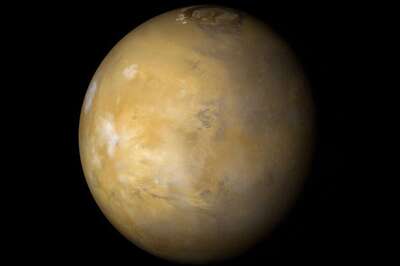
views
Prime Minister Narendra Modi has announced the launch of India-Middle East-Europe economic corridor, an ambitious project aimed at fostering economic growth and countering China’s Belt and Road Initiative.
The new economic corridor was jointly announced by the leaders of the US, India, Saudi Arabia, the United Arab Emirates, France, Germany, Italy and the European Union on the sidelines of the G20 summit.
The corridor will have an eastern corridor connecting India to the Gulf region and a northern corridor connecting the Gulf region to Europe. It would also include a railway and ship-rail transit network and road transport routes.
What is the IMEC Project About
The India-Middle East-Europe Economic Corridor will consist of two separate corridors — East Corridor connecting India to Middle East and Northern Corridor connecting West Asia or Middle East to Europe.
It will include a rail line which upon completion will provide a reliable and cost effective cross-border ship-to-rail transit network to supplement the existing multi-modal transport routes enhancing transshipment of goods and services between South East Asia through India to West Asia or Middle East Europe.
The participating nations also plan to enable the laying of cable for electricity and digital connectivity along the railway route, as well as pipe for clean hydrogen export.
This corridor will secure regional supply chains, increase trade accessibility, improve trade facilitation, and support an increased emphasis on environmental social, and government impacts.
The objective of development cooperation is that it would stand out as symbols of alternate approach, cement our relationship with key actors in the region and beyond, and provide our industry and business new opportunities to plug into international trade and logistics corridors.
There have not been any details on the project’s cost or financing. However, Saudi Arabia’s Crown Prince Mohammed bin Salman mentioned a figure of $20 billion during the announcement.
How India Benefits
India was looking for deeper connectivity with the regions to the north-west of the subcontinent like the Middle East and Europe, but there were obstructions due to the presence of Pakistan in north-west that refused overland access. Moreover, India was struggling for credible connectivity through Iran to the Europe and Middle East.
India is expected to gain significantly as it places the country firmly on the route of trade flows from South East Asia to the Gulf, West Asia and Europe, giving us significant strategic and economic advantage, besides creating huge opportunities in the logistics and transportation sector.
Top government sources have said that the economic corridor will be a zero-commitment project for India as the government has ensured during negotiations that “India gets maximum out of the project so that we connect to the world without much investment”.
According to sources, connectivity with countries of the region remains a key priority for India and is deep rooted in Indian civilizational history. India has always stood to invest, cooperate and build connectivity as part of “One Earth, One Family, One Future”.
Where Did the Idea Came from
The idea of ship and rail connectivity between India and Middle East and US came during a meeting of the National Security Advisors of US, Saudi, UAE and India in Saudi Arabia earlier in May. However, the idea that was still in its rudimentary stage acquired traction much faster.
Finally, the presence of all the key actors in New Delhi for the G20 summit, including the European Union, Saudi Arabia, the United Arab Emirates, and the US, provided India with the opportunity to formally pursue the ambitious project.
Though there is no timeline for the project, but the corridor would provide a physical and ideological alternative to China’s own nation-spanning infrastructure program. It could also be seen as Biden’s attempt to strengthen the G20 group to counter the dominance of Xi Jinping and Vladimir Putin.
For the US, the project is the key to the Middle East where he is losing ground in an area where it was the kingpin and counter China’s emergence in the region. China after brokering peace between Iran and Saudi Arabia has tried to promote itself as a bringer of peace in the region and Chinese President Xi Jinping’s Belt and Road Initiative lays special focus on the region.




















Comments
0 comment